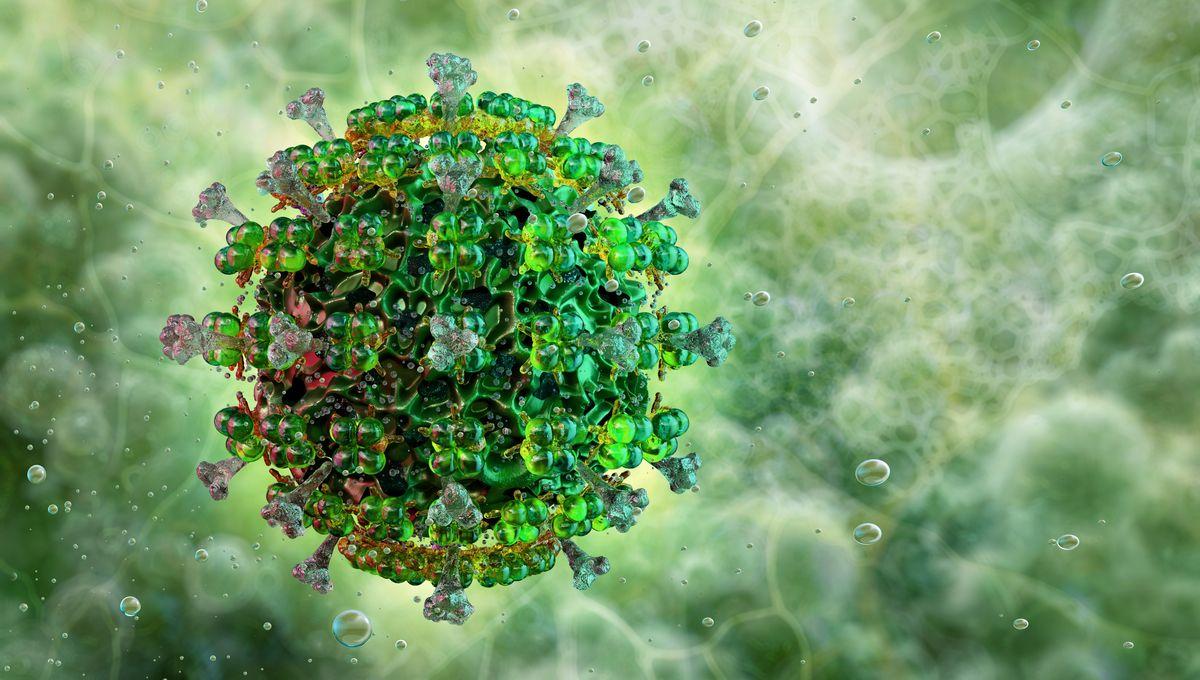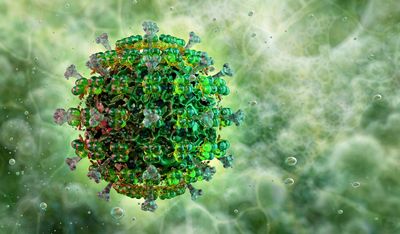You’ve heard of HIV. You’ve definitely heard of COVID-19 – probably more often than you want to, let’s face it. You know about HPV, and tons of other viruses besides… but there’s one that gets nowhere near as much attention, even though it affects millions of people around the world. It’s called human T-lymphotropic virus type 1, or HTLV-1.
HTLV-1, first discovered in 1980, is a retrovirus – a member of the same viral family to which HIV belongs. It’s spread in similar ways too: via blood, breastmilk, and sexual contact. Like HIV, it causes a chronic, lifelong infection. That’s because retroviruses are able to co-opt the internal machinery of some host cells and effectively turn them into virus factories, producing countless new viral particles. Once the viral genome has integrated with the human genome, it’s sticking around, hidden from the immune system and evading any attempts to neutralize it. As Dr Robert Gallo – the man who made the connection between HIV and AIDS – put it, “like a diamond, a retrovirus is forever”. According to the World Health Organization, an estimated 5-10 million people were living with HTLV-1 infection in 2012, but it’s hard to monitor as there isn’t always good data available. More women than men are affected, but the reasons why are not understood. Although it was only isolated less than 50 years ago, it’s thought to have been in the human population for more than 20,000 years. Many of the infections are clustered in “hotspot” regions, including southwestern Japan, sub-Saharan Africa, the Caribbean, South America, and certain parts of the Middle East, Melanesia, and central Australia, particularly in First Nations communities. There’s no treatment right now, although research is happening – more on that later. Mostly, the focus has been on surveillance and prevention, through things like needle exchange programs, screening of donated blood, and barrier contraception. There is no vaccine against HTLV-1. The majority of people infected with HTLV-1 will experience no symptoms at all. However, in the small percentage of people who do, they can be severe and even life-threatening. Between 0.25 and 2 percent of infected individuals will develop a progressive condition called HTLV-1-associated myelopathy/tropical spastic paraparesis (HAM/TSP). This causes progressive muscle weakness, spasms, and stiffness. Rarely, patients can also develop other symptoms affecting the eyes, lungs, and skin. HAM/TSP is rarely fatal, and with treatment to manage the symptoms, people can live for decades after diagnosis, although their symptoms will get progressively worse with time. The other major complication of HTLV-1 is a rare type of cancer: adult T-cell leukemia/lymphoma (ATL). It’s estimated that 2-5 percent of carriers of the virus will develop ATL. HTLV-1 is the only known cancer-causing retrovirus in humans. ATL doesn’t develop suddenly; it takes a series of genetic mutations over time, often several years. There are four subtypes. Treatment depends on the type of ATL, how fast it is growing, and whether other organs in the body are affected, but might include chemotherapy and a stem cell transplant. Aggressive ATL carries a poor prognosis, with a median overall survival of less than a year after diagnosis. A recent study is offering exciting new hope for a treatment for HTLV-1, something that has continued to evade medical science over all these years. “Our study marks the first time any research group has been able to suppress this virus in a living organism,” said co-lead author Dr Marcel Doerflinger of The Walter and Eliza Hall Institute of Medical Research (WEHI) in a statement. In a study spanning 10 years, the team from WEHI and the Peter Doherty Institute for Infection and Immunity developed the first ever humanized mouse model of HTLV-1 infection, which allowed them to analyze how the infection course progresses. They looked at international strains of the virus as well as a genetically distinct one found only in Australia, to learn more about how the virus affects First Nations communities there. The breakthrough really came when they treated the mice with tenofovir and dolutegravir, two drugs already approved for use in HIV. They discovered that these drugs also worked to suppress HTLV-1. “We won’t have to start from scratch because we already know these drugs are safe and effective. And now we’ve shown that their use can very likely be extended to HTLV-1,” said Doerflinger. “There is a real opportunity to prevent the transmission of HTLV-1 and end the diseases caused by these infections,” said co-lead author Professor Damian Purcell. “Our research findings are a major leap forward in this.” The hope now is that HTLV-1 patients can be enrolled on clinical trials. Pretty soon, if all goes well, we could finally see the first specific drug treatments for this virus. The study is published in Cell. What is HTLV-1?
What are the symptoms of HTLV-1 infection?
What’s the latest research on HTLV-1?





